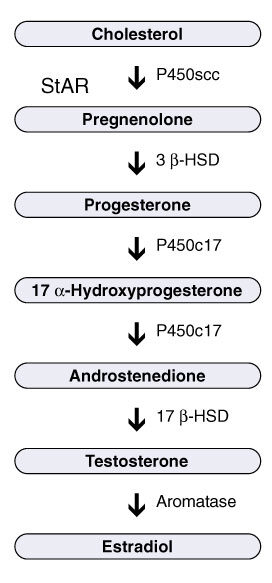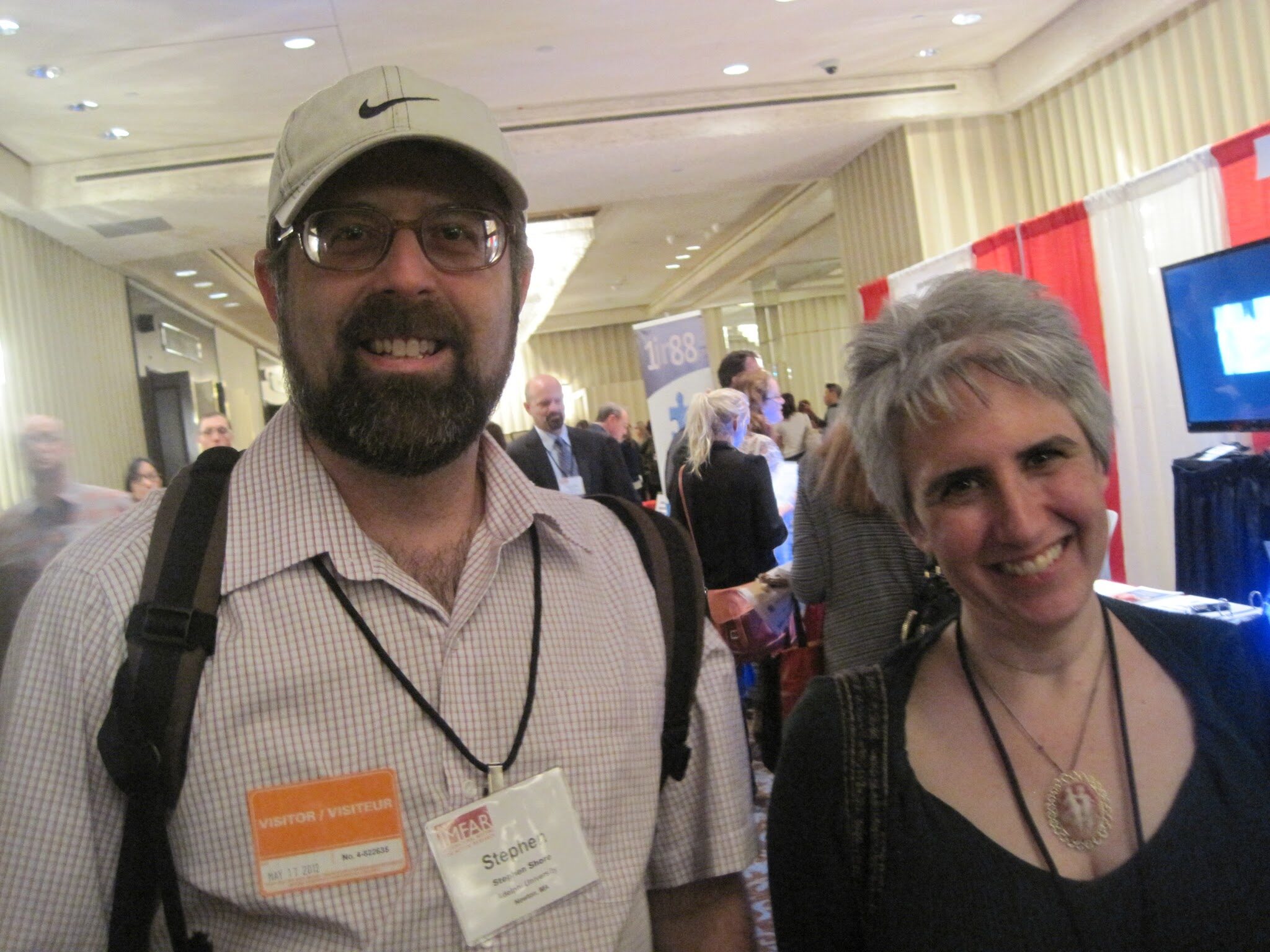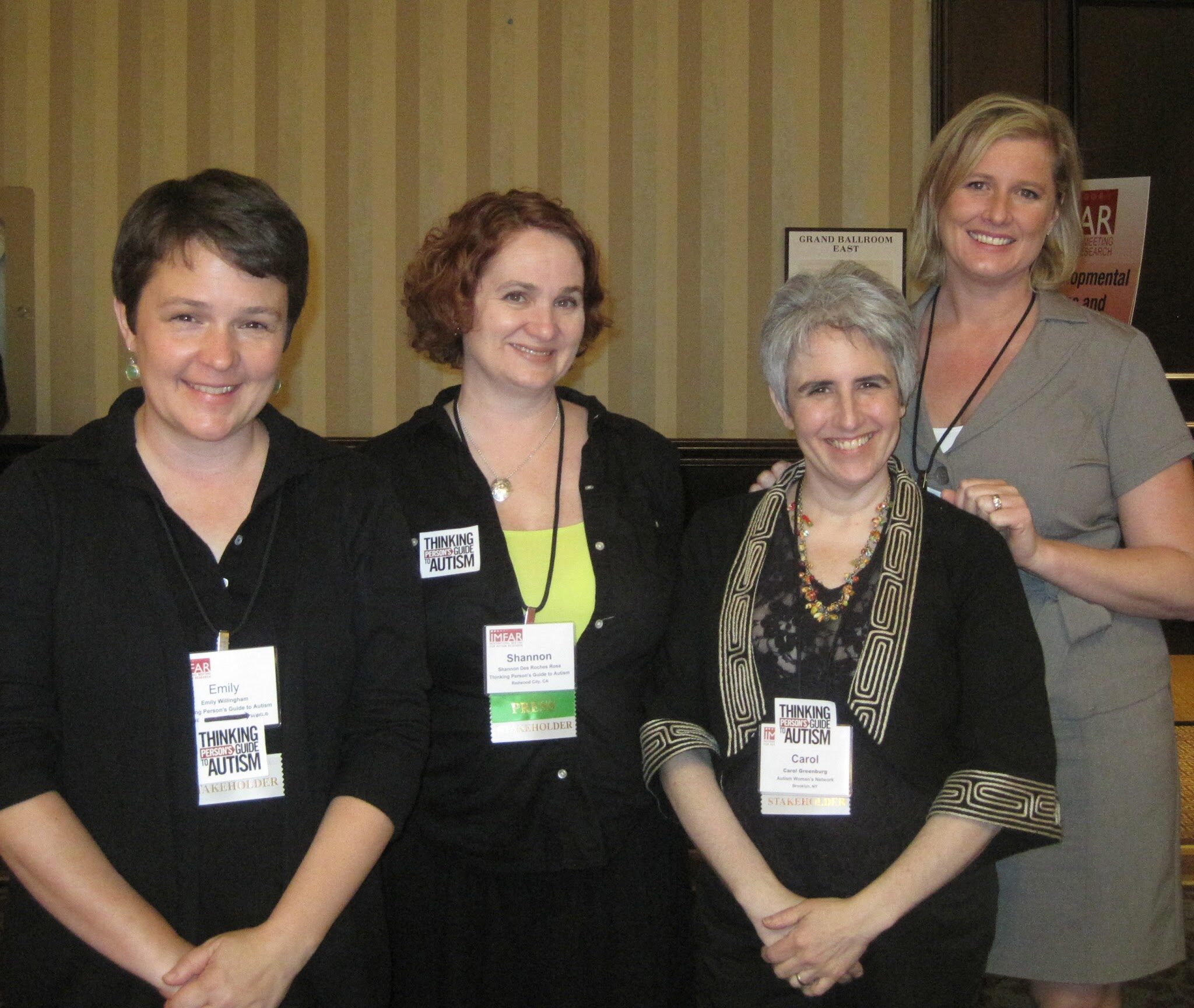This is one of four talks from the IMFAR 2012 symposium Anxiety in Autism Spectrum Disorders: From Biology to Treatment. The overall session theme: It’s clear that anxiety is a major problem for kids and adults on the autism spectrum, now we need to figure out how to treat it. This summary is not intended nor should be taken as medical advice. Please consult a medical doctor for any decisions regarding psychopharmaceuticals. Any errors or omissions in the edited-down transcription below are on me. Dr. Scahill also presented data and slides from several studies, that information has either been summarized or omitted. INSAR members can download the full audio file of Dr. Scahill’s talk. -SR —- Lawrence Scahill School of Medicine, Yale University There are so few data on this topic that he actually had to change the talk. The story starts in 2002, with a study in the New…
Tag: IMFAR 2012
Emily Willingham www.emilywillinghamphd.com Much of what I saw at IMFAR (self-selected, obviously) focused on assessing sex hormone differences or the presumed outcomes of such differences in autistic vs non-autistic populations. As the Father of the Extreme Male Brain Hypothesis that androgen levels relate to autism, Simon Baron-Cohen appeared as senior author on several posters in this subject area and also gave a talk on the same topic. While he is possibly best known in a negative light in autism circles for his tautological “autistic people do poorly on my empathy test ergo autistic people lack empathy” ideas, what I discuss below is not related to that, at all. It’s all about the steroid hormones during development in the womb, and I found it fascinating — again, self selection as someone whose research focus was hormones during development. I’m not the only TGPA editor to have an interest in the link…
This is one of four talks from the IMFAR 2012 symposium Anxiety in Autism Spectrum Disorders: From Biology to Treatment. The overall session theme: It’s clear that anxiety is a major problem for kids & adults on the autism spectrum. The onus on us to figure out how to treat it. Any errors or omissions in the summary below are on me. -SR Connor Puleo: Anxiety in Youth With and Without ASD: Commonalities and Variations What does anxiety look like in ASD and how good are we in measuring it? Are there things that seem to be different in terms of anxiety for children on the spectrum? How that might complicate measurement and methodology? Differential diagnosis in an ASD population is inherently challenging, there’s a lack of consensus how to go about it, and in terms of defining what is anxiety and what is ASD. What this means is that…
Carol Greenburg www.thinkingautismguide.com The author and Stephen Shore Evidence-based information and spirited civil debate abounded at IMFAR 2012. Though I thought we all could have benefited from more power outlets in the breakout rooms, I had some terrific conversations with other attendees — some autistic, some not. I found the formal presentations a bit uneven (I confess the eye-roll Shannon Des Roches Rosa so kindly and repeatedly brought to TPGA readers’ attention happened during several panels). I found a few presentations maddening. One example was Karen Solomon’s talk on Autism and Friendship that seemed to boil down to a not-so-revolutionary point that autistic people are interested in making friends. Is the mythology about our anti-social nature really so deep-rooted, even among people who have met autistics, that it was necessary for attendees to fly in from all over the world for scientific verification? At times like these I skulked in…
Susan Daniels Acting director of office of autism research coordination at NIH (National Institutes of Health) Involved in strategic planning & research at IACC (Interagency Autism Coordinating Committee) —- Dr. Daniels spoke at IMFAR about the IACC and the NIH, on the autism research landscape, and IACC research and data sharing. Any errors or omission are on yours truly. -SR IACC (Interagency Autism Coordinating Committee) IACC background: formed under Combating Autism Act of 2006 (CAA) with the goal of accelerating the pace of autism research, and coordinating it as well. The CAA expired Sept 2011, but has been reauthorized. The IACC consists of Federal and Public members (click photo to enlarge): List of IACC members, new members are red The IACC Mission (from the official site, iacc.hhs.gov) Provide advice to the Secretary of Health and Human Services regarding Federal activities related to autism spectrum disorder. Facilitate the exchange of…
Dr. Evans was a keynote speaker at IMFAR 2012. His talk centered around the work that is being done based on the data collected from the longitudinal study of normal brain development at NIH. He spoke extensively about correlates that can be read from the data, for example, the relationship between cortical structure and things like IQ and testosterone levels. It would be impossible to capture the incredible amount of information in 140 character bites, but as an outline, we hope it can give you a starting point for further research. Errors, omissions and misspellings are mine.-JBM
Emily Willingham www.ThinkingAutismGuide.com Caveat: All findings discussed here were presented at a conference and have not undergone peer review. —- What is the use of animal models? I understand the use of animal models like mice to figure out how gene changes affect outcomes in a whole animal, rather than, say, in cells in a dish. I’ve used them myself. Knocking out a gene of interest in a mouse strain, applying an environmental exposure of interest, observing the behavior of the mouse involved — these tactics can be revealing, sometimes. Say a mouse with a nonfunctioning partner in a gene pair shows a specific behavior — like vocalizing less to its mother — and maybe we can interpret that in human terms as being inhibited social communication and assume the gene in question is involved. The idea is that observing changes linked to the absence or overabundance of a particular…
Shannon Des Roches Rosa www.ThinkingAutismGuide.com TPGA editors at IMFAR 2012 We had a great time at IMFAR; it was important that TPGA be present, given our mission to support evidence-based autism information. I wish more autistic people and people whose lives include autism — personally or professionally — would or could attend. We’ll keep posting summaries and insights for those of you who couldn’t go. Here are my general observations and takeaways. IMFAR 2012 ‘s goal was to present the newest research conducted over last year, with a particular effort to include presenters from outside autism science whose research overlaps with or has implications for autism. This may be why the science often, though not always, seemed a bit softer than 2011. With the result that in some panels, I would just … stop typing after a while, because it was clear the material would not be terribly useful to…
We’ll be posting about IMFAR 2012 over the next week or so, once we all catch our breath. In the mean time, see if you can identify the four people in this photo, which was taken when said folk peered over an iPad after nearly an hour of intense discussion. (Hint: All four have contributed original writing to this site.)
Any omissions or errors in this summary are on TPGA; we have tried to include explanatory links for specific scientific terms. -SR Common and Genetic Variants in the Etiology of ASD: Where is the Field Heading? Bernie Devlin University of Pittsburgh Statistical geneticist, helps design projects & studies. Dr. Devlin’s goal: convince you that we know quite a bit about the genetics of autism, in a few years we’ll know more. Exciting times! Are those times going to continue? Devlin maintains, yes. Using array-based tech & high throughput sequencing, Samples and collaboration He considers that discovery of autism risk genes is going to increase exponentially in near future. How will we get there? Autism Genome Project (AGP) Trios: Mother, Father, ASD child Families could be multiplex (2+ ASD individuals per family) or simplex (1 ASD individual per family) Simons Simplex Collection (SSC) Families are mostly quartets (Mother,…




